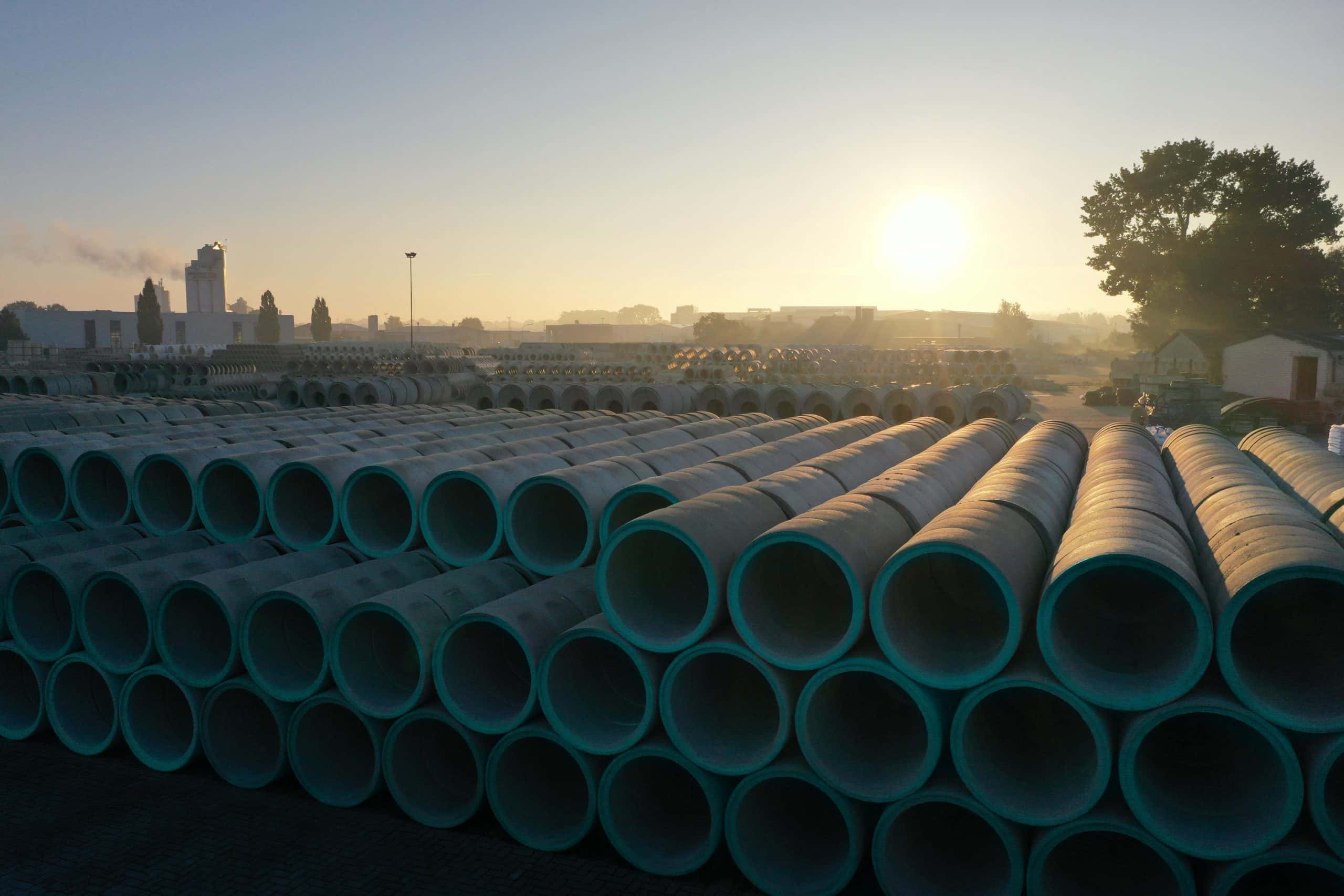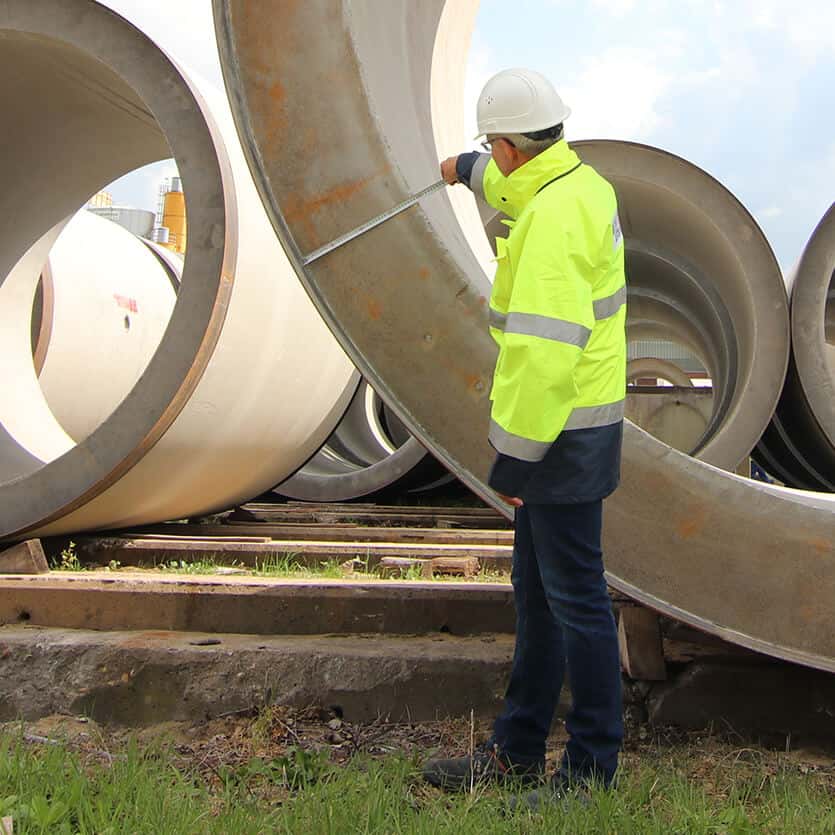
GEOPOLYMER CONCRETE:
PROVEN TECHNOLOGY REDISCOVERED
next.beton- cement-free climate-friendly
GEOPOLYMERS - ORIGIN AND DEVELOPMENT
The first scientific publications on the subject of geopolymers appeared as early as the 1970s. Decades earlier, alkali-activated clays, ashes or slags were already being studied as latent hydraulic binders. The first industrial use of geopolymers occurred in Eastern Europe and Russia. Here, geopolymers were used for the production of railway sleepers, among other things. Geopolymers were first used on a larger scale in the 1990s by the American cement manufacturer Lone Star Industries. This company used a mixture of cement and geopolymer in civil engineering and road construction.
However, the breakthrough in the field of geopolymer concrete was achieved in 2004 by the Australian company Wagners with the development of EFC® (Earth Friendly Concrete®)

EFC® (Earth Friendly Concrete®)
THE BREAKTHROUGH IN GEOPOLYMER CONCRETE
For the production of EFC®, a geopolymer binder is used that results from the chemical activation of two industrial by-products (for example blast furnace slag and fly ash). The environmentally friendly concrete technology offers significant CO2 savings potential without reducing the technical and structural qualities of concrete.
A special property of geopolymer concrete is its resistance to chemical attack.


WITH EFC® TO NEXT.BETON - THE MOST CLIMATE-FRIENDLY SEWER SYSTEM IN GERMANY
2011
INDEPENDENT ENGINEER'S REPORT
which demonstrates equal or better performance than conventional concrete in accordance with the performance requirements of Australian Standard AS 3600 “Concrete Structures”.
2012
PARTICIPATION IN THE CONSTRUCTION OF THE GLOBAL CHANGE INSTITUTE
5-storey apartment building at the University of Queensland. The world’s first application of modern geopolymer concrete in a load-bearing element of a multi-storey building.
2013
EFC® RECEIVES BPN SUSTAINABILITY AWARD
2014
BRISBANE AIRPORT WESTWELL CAMP
51,000 m² of heavy-duty EFC® pavement for turning nodes and taxiway areas. EFC® concrete was also supplied for the foundations and wall slabs of the terminal building and all construction works on the site, including the entrance bridge. In this project alone, around 8,800 tonnes of CO₂ emissions were saved through the use of EFC®.
2015
QUEENSLAND STATE AWARD FOR EXCELLENCE – „ENGINEERING PROJECTS“
awarded by the Concrete Institute of Australia (CIA)
2015
CIA NATIONAL SUSTAINABILITY AWARD – HIGHLY RECOMMENDED
2016
EFC® RECEIVES THE ACI AWARD
American Concrete Institute (ACI) Global Excellence in Concrete Awards Winner – Flatwork category
December 2020
PRODUCTION OF THE FIRST EFC® REINFORCED CONCRETE PIPES
After Günter Röser became aware of EFC®, he and his sons Carl Maximilian and Louis Röser set themselves the common goal of producing climate-friendly concrete sewer systems based on EFC® that would enable every municipality and planner in Germany to realise a sewer system that was sustainable throughout its entire life cycle. In order to achieve this goal, the Röser Group of Companies, which can supply throughout southern Germany with its plants, relied on a partnership with BERDING BETON GmbH and Finger Baustoffe GmbH.
April 2021
STARTING SIGNAL FOR NEXT.BETON - COOPERATION OF THE THREE CONCRETE SPECIALISTS
The cooperation of the Röser Group, BERDING BETON and Finger Baustoffe ensures that the transport routes of the raw materials and the routes of the products to the customers can be kept short and that planners and municipalities throughout Germany have access to the new next.beton sewer system. In addition, the companies cooperate in connection with obtaining the DIBt approval and in marketing, but beyond that they act completely independently of each other in terms of business and sales.
November 2021
SUBMISSION OF PRODUCTION DATA AND SAMPLES TO THE DIBT
May 2022
OFFICIAL PRESENTATION OF THE NEXT.BETON DUCT SYSTEM AT THE IFAT IN MUNICH
May 2024
Successful DIBt approval
THE ADVANTAGES OF NEXT.BETON AT A GLANCE
ECO-FRIENDLINESS
Massive CO2-savings
By using a cement-free binder, up to 70 percent of CO2 emissions can be saved in the production of next.beton.
INNOVATIVE FORMULATION
Cement-free composition
In the production of next.beton, energy-intensive cement is replaced by a geopolymer binder – completely without any technical or qualitative losses.
XA3 COMPETENCE
High acid and sulphate resistance
Due to its lime-free composition, next.beton can be used for XA3 applications without the need for costly additives, coatings or internals.